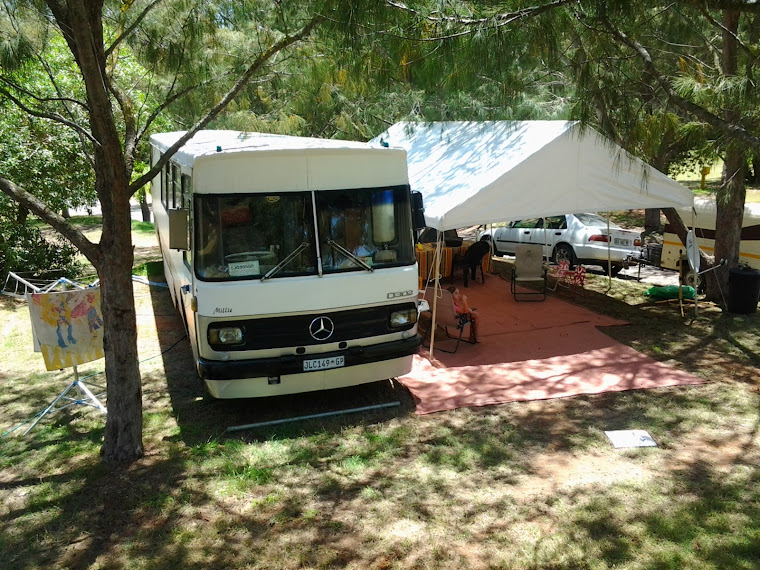

Today I looked at the stats page of my blog and it was very interesting.Of all the posts I wrote the last year the posts about traveling to the different areas are the ones that gets the most attention.
As from the end of this year the team and I will be traveling full time again.At this stage of our lives we are building our new home on wheels.We previously travelled with a caravan and a Iveco motorhome that I all so converted.
We searched for three years to find the right bus to buy.We looked at many buses in the search for the one for us.
I had certain must haves in our search for the bus.First it had to have a gross weight of less than 16 tuns dew to our license limitations both mine and that of Anita's.I wanted a bus with the engine at the back of the bus it makes for a much quieter ride while travelling and suits the layout we wanted in side bus the best.The bus had to be automatic, our Winnebago was automatic and I loved driving the Winnebago.I all so wanted the bus to have air suspension,we spent many hours on the road on a full-time basis and a air suspension makes traveling so much more enjoyable.And then ther is the small matter of our budget.
The bus we bought last year from a Primary school in Krugersdorp fit all our needs and fit in to our budget. Our new home on wheels will be a 36 foot{11m} 1976 Mercedes bus that we are converting into a motor home.
As we will be travelling full-time next year we will be trying to avoid the very expensive caravan parks.Caravan parks can eat into your badged very quickly if you are not careful.I have nothing against caravan parks thy are good for the family's taking weekend breaks or their yearly holidays.We don't have any use for them anymore.I can not bring my self so far to pay hundreds of rands per day for a sower and a toilet and electricity.I much prefer to park the motorhome somewhere at the beach watching the tides come and go.And to take long walks on the beach with my wife and children.
To be able to free camp comfortably we need to also spend a lot of money.For instance I need to install solar panels on the roof of the bus and deep cycle batteries so that we can operate normally without being plugged in to shore power.Water is also as important,to be self sufficient I need to install a big enough water tank to last us at least a week before refilling.Refilling our water tanks is not to much of a problem.Most public parks have water taps so do graveyards.We need to refuel with diesel any way and while doing so refill the water tanks to.
Free camping or wild camping does not mean that you must forfeit all the comforts of parking in a caravan park as long as you are prepared for it.



